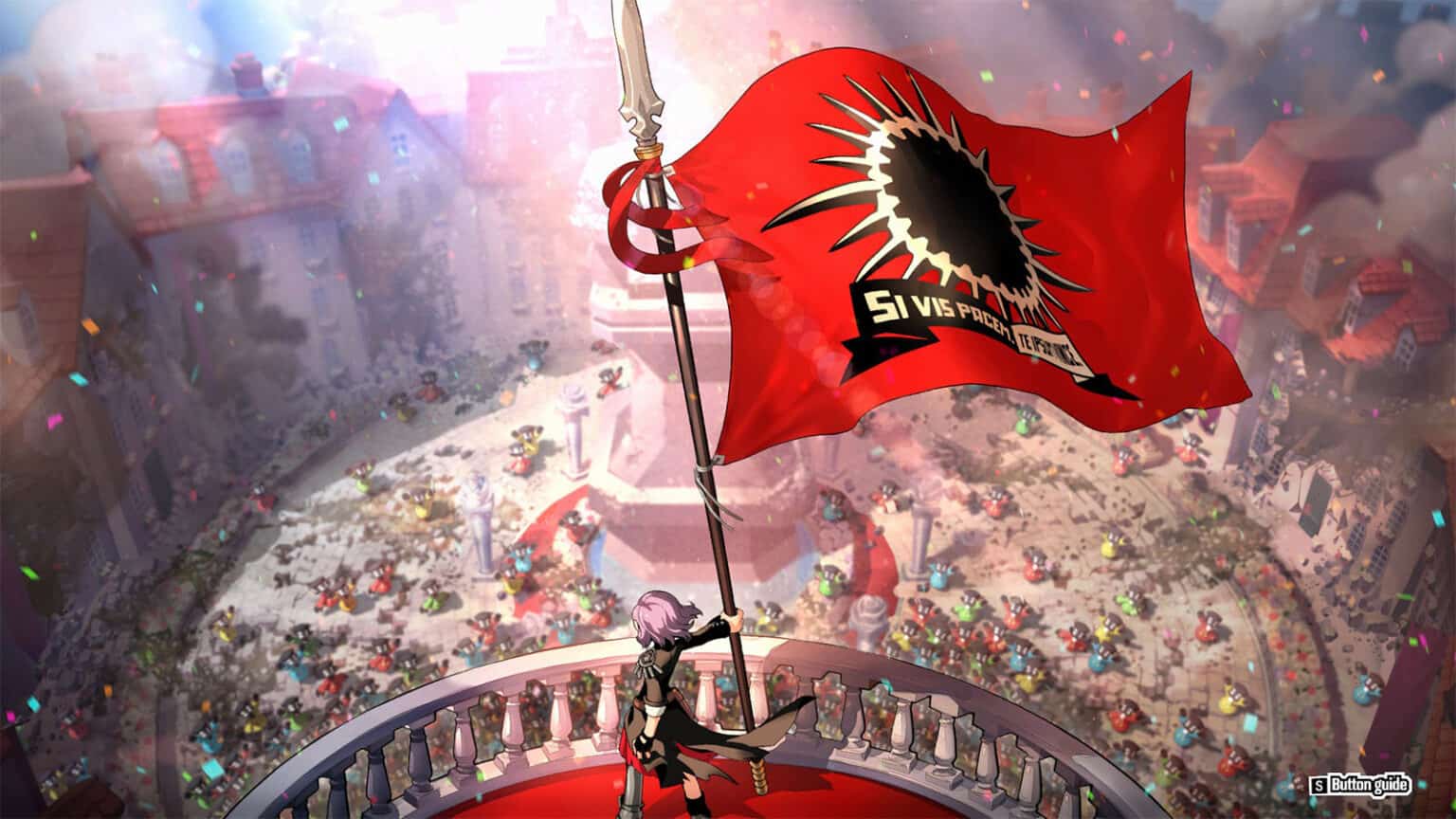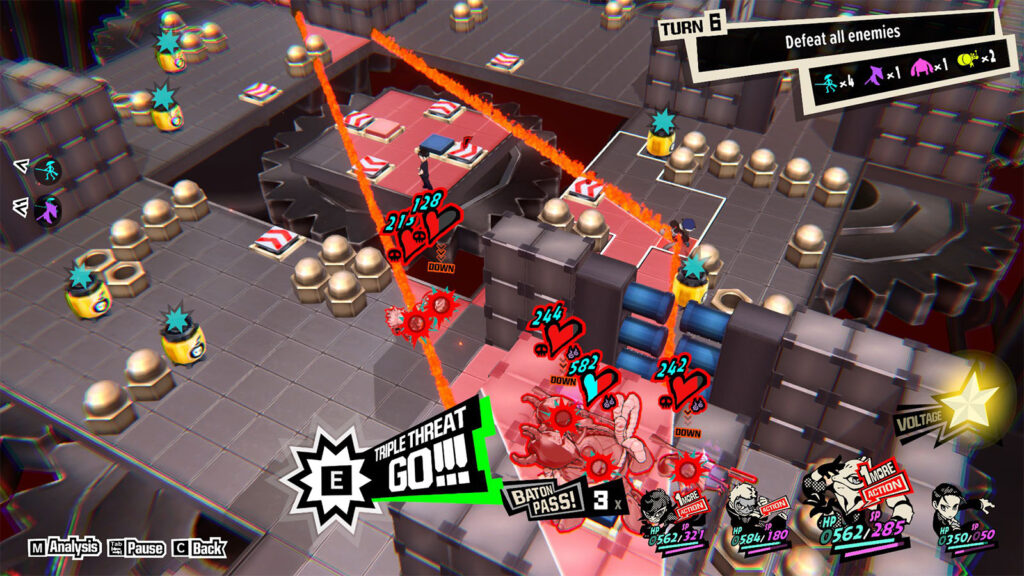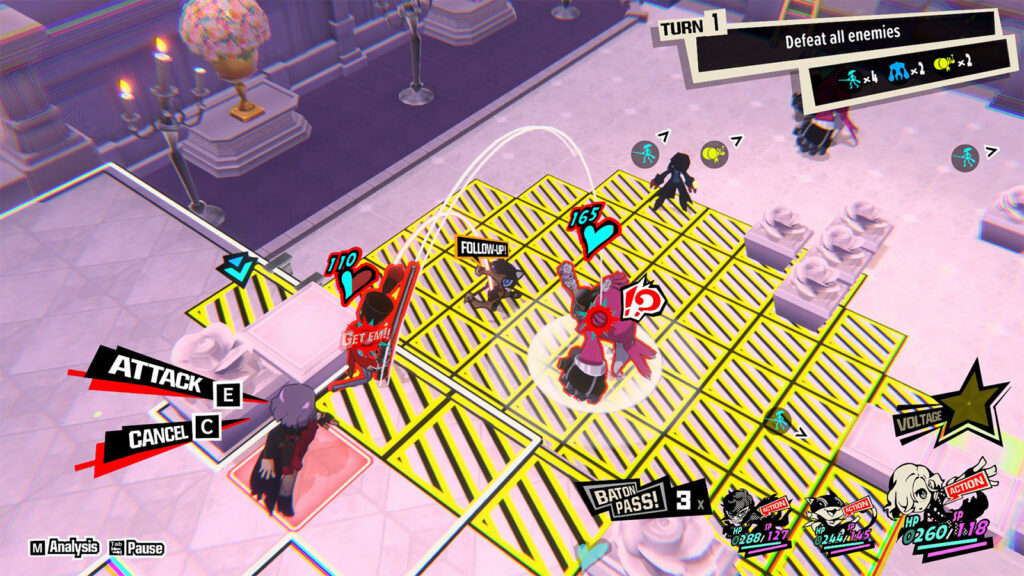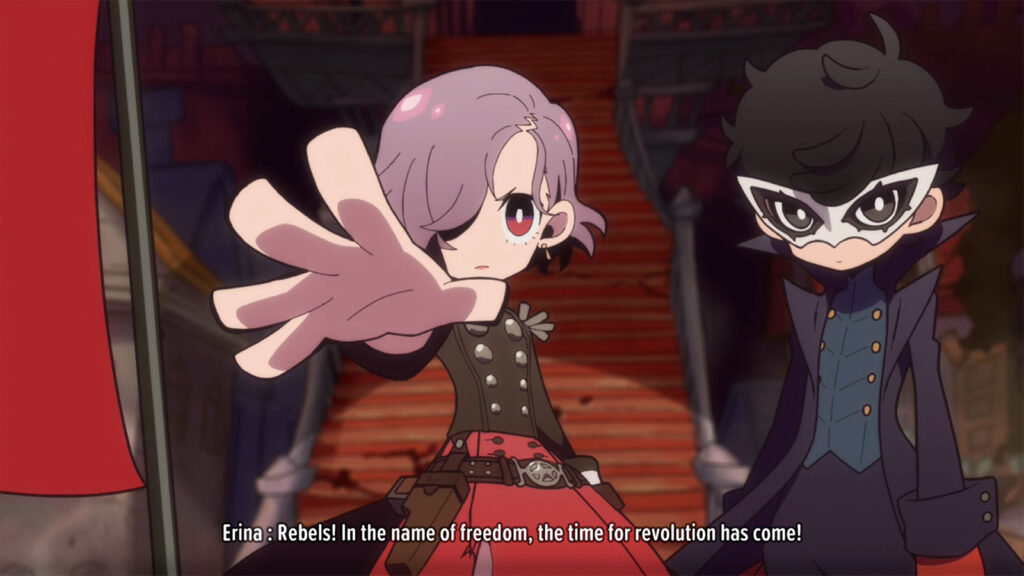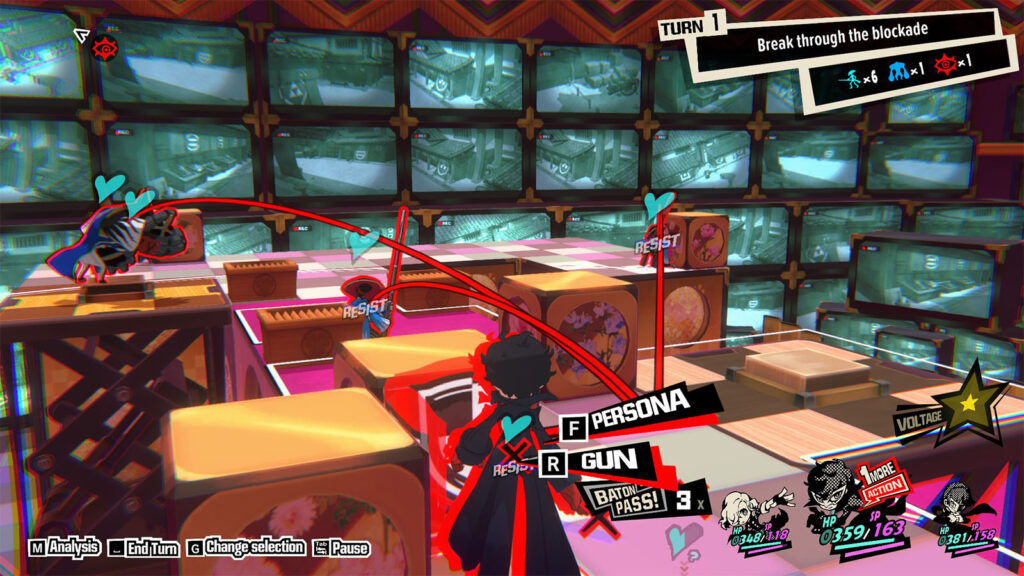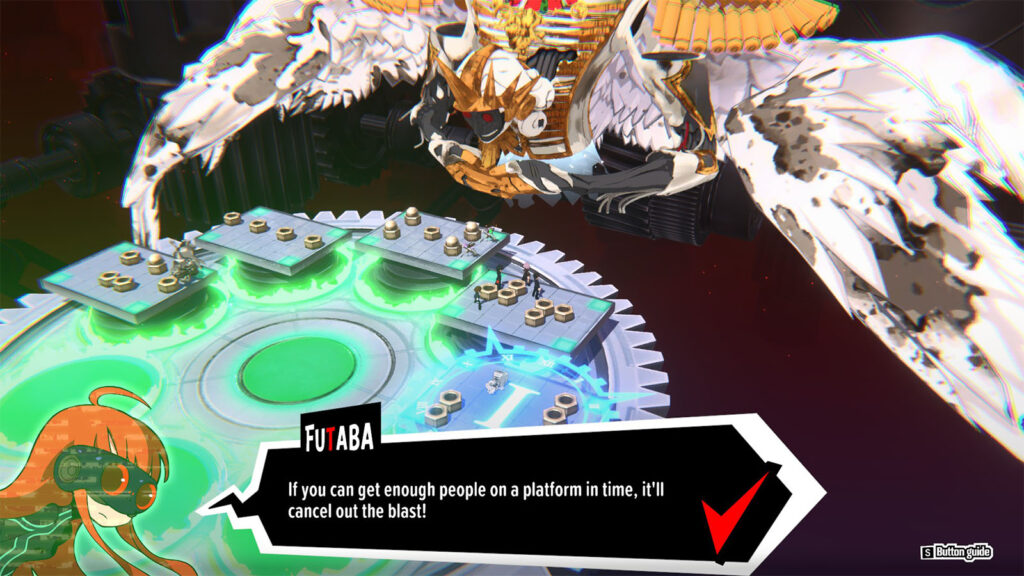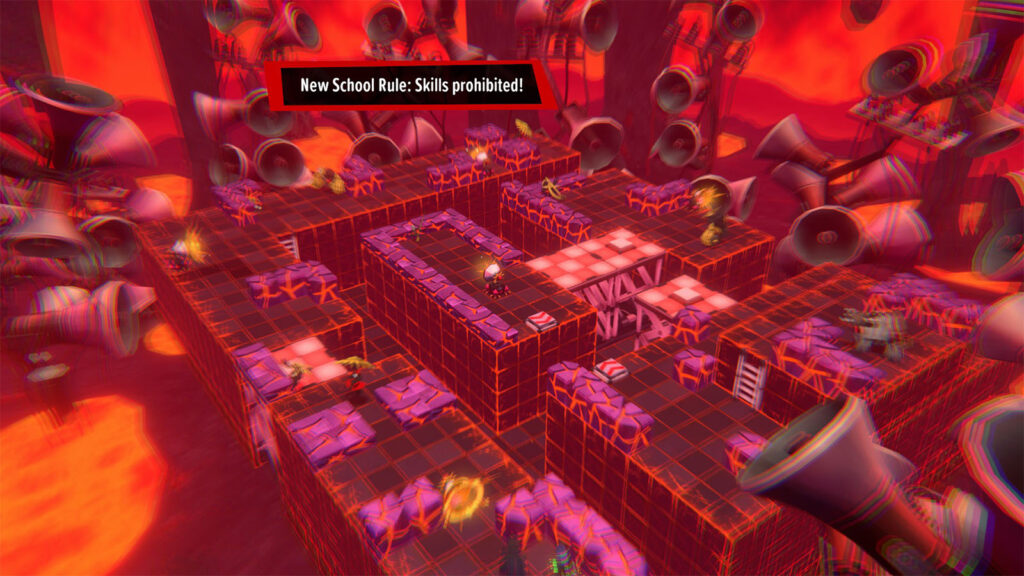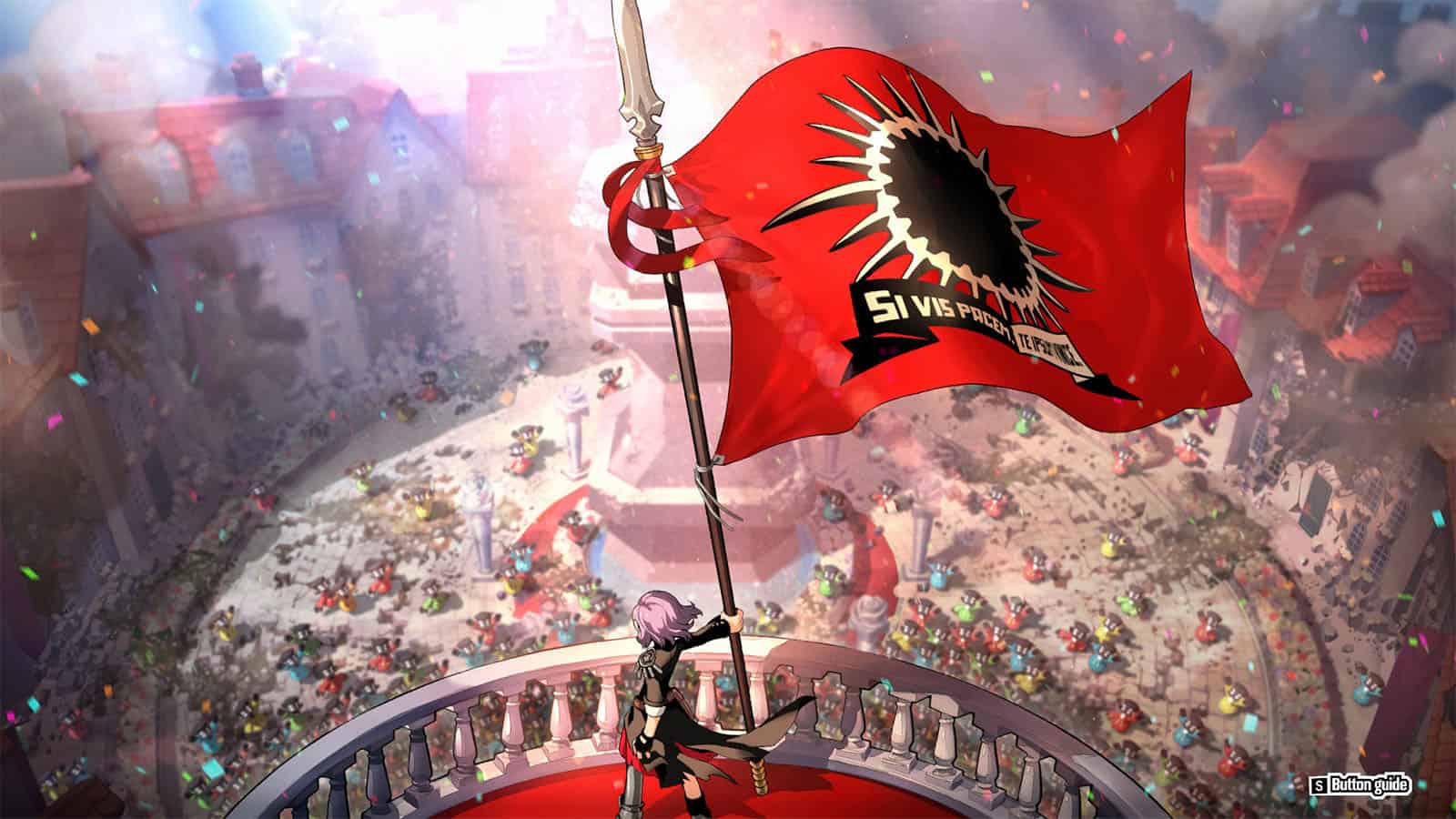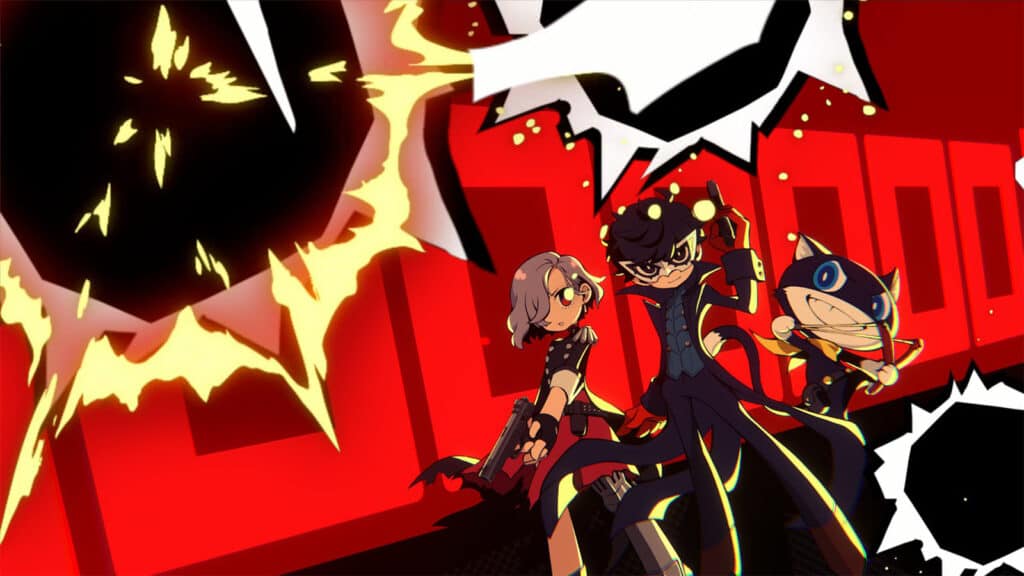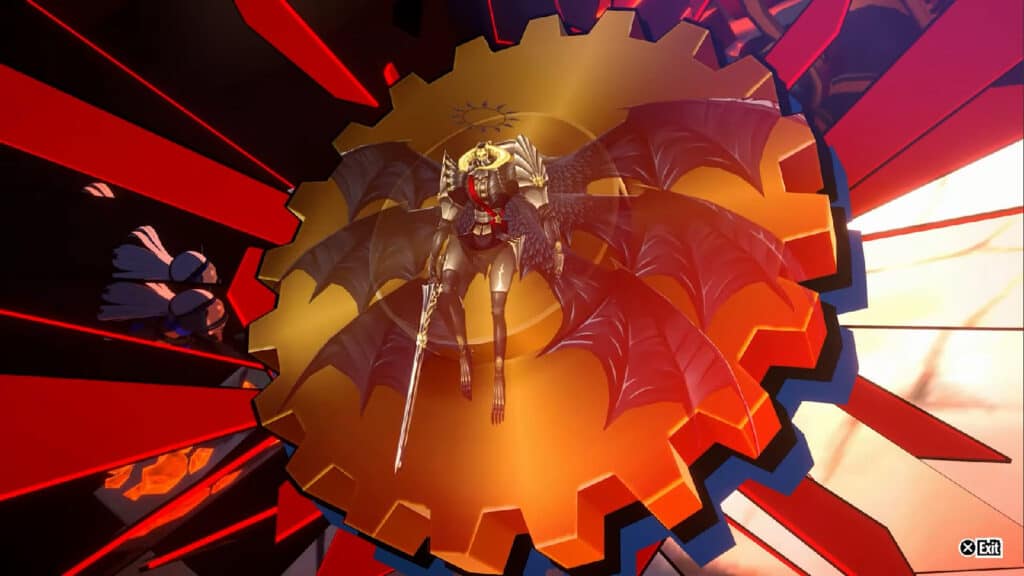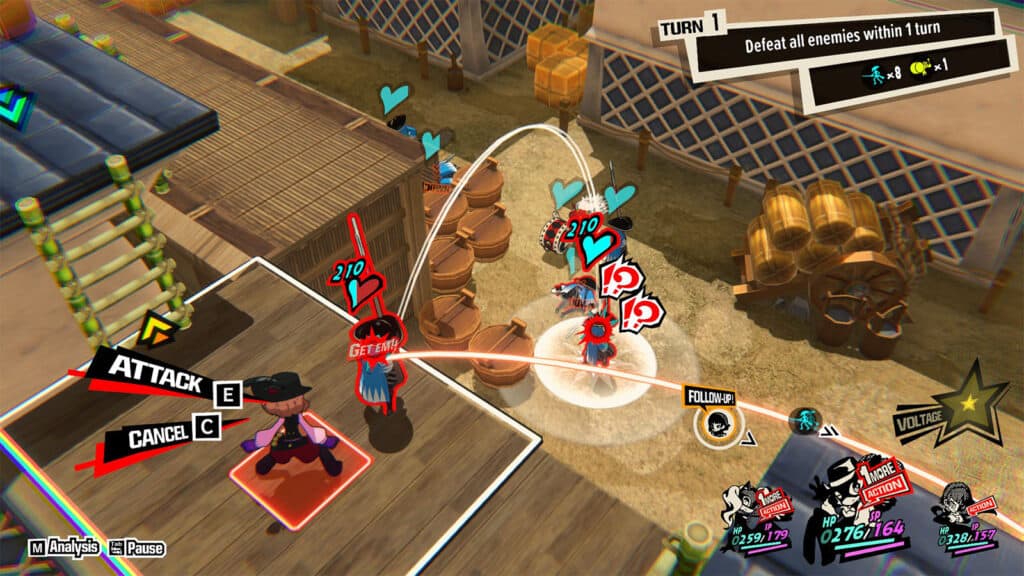Persona 5 Tactica is a turn-based tactical game made by Atlus which brings back the Phantom Thieves once again into the Metaverse a year after the events of the first Persona 5 game. However, in this instance of the Metaverse, they soon find out that everything works differently compared to what they have encountered before, with what were once Palaces now known as Kingdoms controlled by rulers who have command over legionnaires and other beings born of cognition. Unlike before where they can freely go back to reality whenever it’s safe, the gang finds themselves stuck, with seemingly no doors to escape through.
Being quite a fan of the Persona 5 series since it came out, I played the game with ample knowledge about the stories and backgrounds of the playable characters, so it was a great advantage to be already familiar with a good chunk of the game’s lore and story, especially now that the game has taken on a more complex style of gameplay. There’s a lot that I would like to praise and talk about the storytelling and world creation of Tactica, but we’ll talk about gameplay first.
Tactica has taken on the grid-bound and turn-based gameplay which which definitely has made the game’s pace slower than even Persona 5’s, but it’s a nice meld between the first game and Strikers since units can be moved through the battlefield within turns. There are also a couple of big changes to the other off-battle mechanics that help a bit in balancing the complexity of the game, such as limiting the inventory to only have weapons and the absence of the confidant system.
The game also simplified its leveling mechanic where there is only the player’s level and there is no need to level up each unit individually; in my opinion, this a good compromise since you’ll only be able to send out three units per mission. It is possible to replay most of the missions to get more money and Personas, but based on my experience, I got through the story with very minimal replays of the previous levels, so there wasn’t much grinding that I had to do.
As for the Personas and the Velvet Room, their function essentially remained the same with the addition of the weapon creation feature with the use of collected Persona, plus the room itself got a quirky overhaul and it no longer looks like just a drab prison. Another good compromise that the game made involving the Personas is that a Persona can now be assigned or equipped to the main playable characters as Sub-Personas, which allows units to use their skills and passive abilities. This gives players a bit more freedom when customizing their units’ move sets.
The main drawback of taking on this turn-based style of gameplay is that the pace of the missions and battles can often become too dragging. Most of the battles are a hit and a miss when it comes to the experience of playing them: on one end, the action that you get if you really play your units right can be quite satisfying, especially if you manage to chain attacks and eliminate 90% of the enemies in a turn, but on the other end, enemies can just feel like they’re more of a nuisance to defeat and the mission just feels like a drag to accomplish.
Fair enough, this kind of experience can be attributed to the player’s experience and skill, but players who got used to the more action-oriented gameplay, especially those who jumped from Strikers, might easily get put off by the decelerated play style.
As for the story, I would say that this is Tactica’s strongest point. The story went so much more cohesive than compared to Strikers’ story since the world was created based on a single character’s cognition. I also appreciated the many subtle references to the previous games, especially the ones from the first game. These were shown through conversations between Toshiro and certain characters like Futaba, Yusuke, and Haru whenever Toshiro talked about his parents since these three characters’ arcs also revolved around their parents back in the first game. It gave these small interactions a bit more meaning and connection which is quite a nice touch and well thought of.
The story itself isn’t that long with just four chapters; it just feels long because of its gameplay. But despite that, Tactica still managed to leave quite an impression with the way its story was told. It also remained grounded with its theme of “the youth that goes against the evils of society,” but without being too preachy and one-sided by being able to look at both opposing sides when it is appropriate and called for.
Moving on to the graphics, when I first saw the game for the first time in trailers, I wasn’t into the cartoonized versions of the illustrations that much mainly because I got used to the art style of the previous games. But in time, they grew on me and I could say that they’re well done. I also realized that the art style was a wise decision since we see the units on the battlefield most of the time, and scale-wise, keeping a general proportion for all the units on the field and on the dialogue scenes prevents this sort of back and forth between two art styles that could be immersion breaking.
The level designs for the levels and missions are something worth looking at as well. The levels had to be kept with the least clutter as possible, which is understandable for this kind of game, but everything within the level as well as the background visuals were nicely done and kept in theme. Every world has its own theme and vibe and I quite enjoyed just going through them, I could say that Tactica has maintained the quality of visuals that Persona 5 had so well and even improved on it.
For the audio side of the game, props to Lyn who is still the voice of the great soundtracks in Tactica. Although, to be honest, songs from the first game are still on top of my list when it comes to Persona 5 songs as they’re just catchier and more fun to jam to than the ones in this game. Maybe it’s just because more brain power is allotted to strategizing during missions that it’s just easier to tune out the songs that play in the background. The non-vocal background tracks are still as engaging and hyping when they come up, especially during boss fights, but along with the rest of the songs, they’re not as memorable.
As for the voice acting, the talents behind the characters gave quite a performance, most noticeable in livelier characters such as Morgana, Futaba, Ryuji, and Yusuke at times. I played with Japanese voices on by preference, so my commendation is more for the Japanese side of voice acting, but based from the snippets I’ve heard with the English voice acting, I could say that the actors have done quite an awesome job as well.
On the side of performance, there isn’t anything to point out other than the game worked smoothly. There weren’t any bugs or issues that affected my gameplay or experience, so Tactica gets a great mark on this field.
For replayability, the missions do offer a star system where you get more stars the more criteria you pass, plus there’s the Persona compendium that can be filled out. Both activities are tied to achievements, so completionists can spend more time in obtaining these achievements through the New Game+ mechanic. There’s also the Repaint Your Heart DLC that can be played which provides more missions with Kasumi and Akechi as playable characters, but this review only covers the main Tactica game.
With everything considered, I could say that I had a great time playing Persona 5 Tactica, not only because I got to go through another story with characters that I grew fond of, but also I had fun with the challenges that the grid-based gameplay imposed. The gameplay made me really think carefully and made me more conscious about the placement and moves that I’m about to make. I also appreciate the compromises that the developers had to make with the gameplay mechanics in their attempt to keep things balanced. The devs also did a wonderful job with the story and in making sure that the story remains relevant and coherent.
I could confidently say that Persona 5 Tactica is a worthy addition to the Persona 5 franchise, I dare say that it’s an even better sequel than Strikers.



